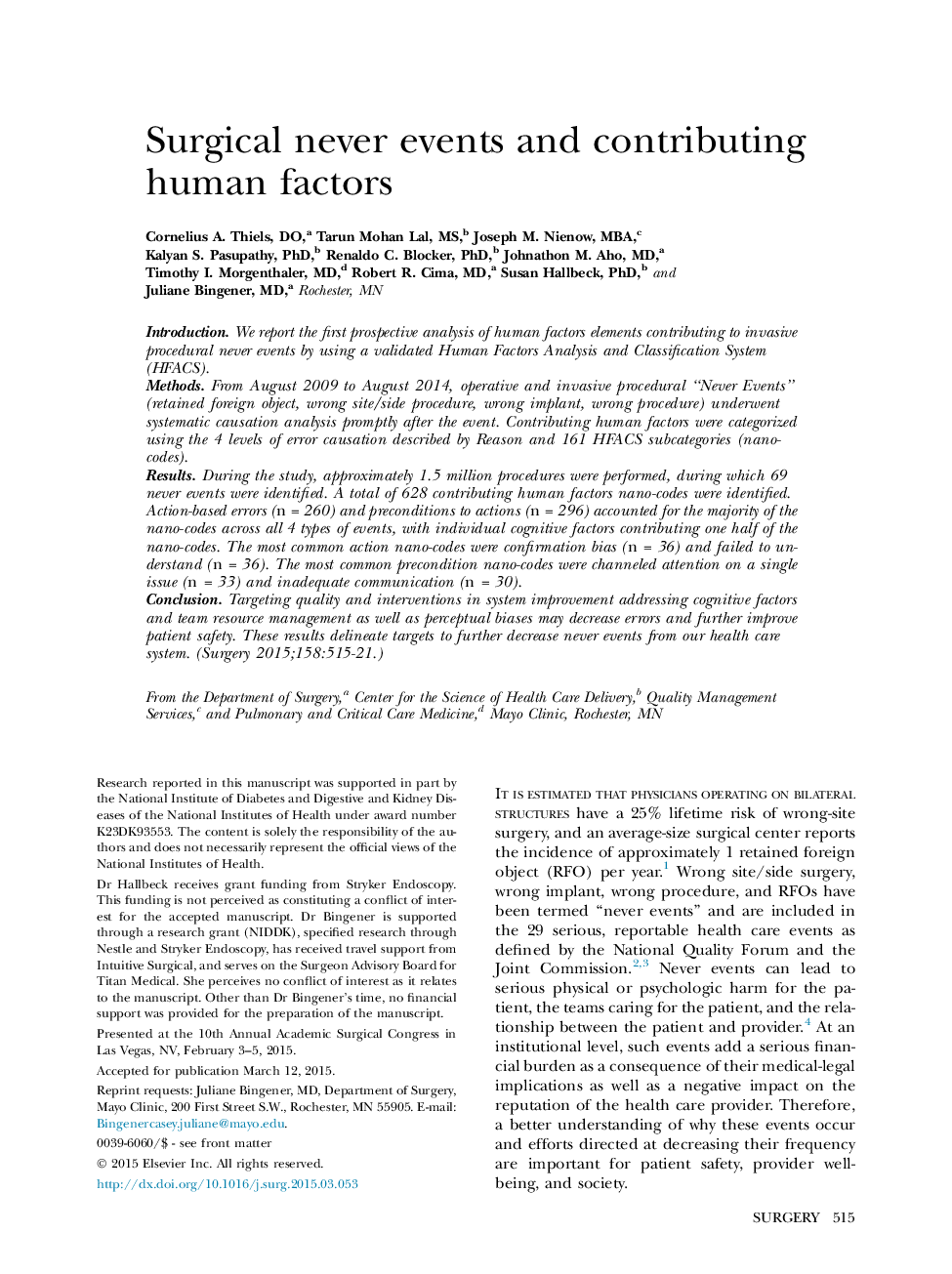| Article ID | Journal | Published Year | Pages | File Type |
|---|---|---|---|---|
| 4307023 | Surgery | 2015 | 7 Pages |
IntroductionWe report the first prospective analysis of human factors elements contributing to invasive procedural never events by using a validated Human Factors Analysis and Classification System (HFACS).MethodsFrom August 2009 to August 2014, operative and invasive procedural “Never Events” (retained foreign object, wrong site/side procedure, wrong implant, wrong procedure) underwent systematic causation analysis promptly after the event. Contributing human factors were categorized using the 4 levels of error causation described by Reason and 161 HFACS subcategories (nano-codes).ResultsDuring the study, approximately 1.5 million procedures were performed, during which 69 never events were identified. A total of 628 contributing human factors nano-codes were identified. Action-based errors (n = 260) and preconditions to actions (n = 296) accounted for the majority of the nano-codes across all 4 types of events, with individual cognitive factors contributing one half of the nano-codes. The most common action nano-codes were confirmation bias (n = 36) and failed to understand (n = 36). The most common precondition nano-codes were channeled attention on a single issue (n = 33) and inadequate communication (n = 30).ConclusionTargeting quality and interventions in system improvement addressing cognitive factors and team resource management as well as perceptual biases may decrease errors and further improve patient safety. These results delineate targets to further decrease never events from our health care system.
